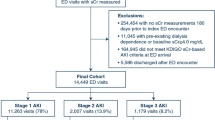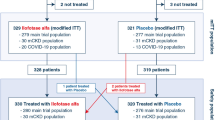Abstract
Rationale
Cardiac surgery presents a risk to all major organs due to activation of the systemic inflammatory response. Patients referred for cardiac surgery are typically older, usually have comorbid conditions, and are thus at higher risk of postoperative multiorgan dysfunction. Patients demonstrating evidence of organ dysfunction require intensive postoperative management. Any means to predict and reduce the inflammatory response mounted postcardiac surgery could translate into a clinical benefit for the patient and reduce the length of stay in intensive care.
Objective
Statins are commonly used to prevent primary and secondary cardiovascular disease through their cholesterol-lowering effects. However, they have been shown to have anti-inflammatory properties, which may help reduce postoperative mortality and morbidity for patients undergoing cardiac surgery. The purpose of this study was to analyze the in vivo effects of high-dose atorvastatin (statin) on ex vivo neutrophil migration in healthy volunteers.
Methods
Thirteen healthy male volunteers consented and were placed on high-dose (40 mg) statin therapy for 2 weeks. At week 0 and week 2, full blood count, liver function, serum cholesterol and creatine kinase were assessed, as was neutrophil migration.
Results
Neutrophil migration of healthy volunteers was significantly reduced after 2 weeks of high-dose statin therapy (p = 0.002), as was serum cholesterol (p <0.001). There was no change in liver function during statin treatment.
Conclusion
Statins have an established role as cholesterol-lowering agents, and this study demonstrates that they also potentially have an anti-inflammatory effect in healthy male volunteers.



Similar content being viewed by others
Abbreviations
- ABTS:
-
2,2'-azino-bis(3-ethylbenzthiazoline-6-sulphonic acid
- ARDS:
-
Adult respiratory distress syndrome
- CK:
-
Creatine kinase
- DMEM:
-
Dulbecco’s modified Eagle’s medium
- FBC:
-
Full blood count
- FCS:
-
Fetal calf serum
- fMLP:
-
Formyl-methionyl-leucyl-phenylalanine
- HDL:
-
High-density lipoprotein
- HPAEC:
-
Human pulmonary artery endothelial cell
- sICAM:
-
Soluble intercellular adhesion molecule
- LDH:
-
Lactate dehydrogenase
- LDL:
-
Low-density lipoprotein
- LFT:
-
Liver function test
- LPS:
-
Lipopolysaccharide
- MI:
-
Myocardial infarction
- MPO:
-
Myeloperoxidase
- NO:
-
Nitric oxide
- UK:
-
United Kingdom
References
Ireland, T.S.f.C.S.i.G.B., Sixth National Adult Cardiac Surgical Database Report. 2008. 1(6):154
Wagner JG, Roth RA (2000) Neutrophil migration mechanisms, with an emphasis on the pulmonary vasculature. Pharmacol Rev 52(3):349–374
McGuinness J, Bouchier-Hayes D, Redmond JM (2008) Understanding the inflammatory response to cardiac surgery. Surgeon 6(3):162–171
Rinder CS et al (2003) Neutrophil CD11b upregulation during cardiopulmonary bypass is associated with postoperative renal injury. Ann Thorac Surg 75(3):899–905
Johnson D et al (1994) Neutrophil-mediated acute lung injury after extracorporeal perfusion. J Thorac Cardiovasc Surg 107(5):1193–1202
Maher BM et al (2009) Statins alter neutrophil migration by modulating cellular Rho activity–a potential mechanism for statins-mediated pleotropic effects? J Leukoc Biol 85(1):186–193
Hindler K et al (2006) Improved postoperative outcomes associated with preoperative statin therapy. Anesthesiology 105(6):1260–1272, quiz 1289–90
Naidu BV et al (2003) Simvastatin ameliorates injury in an experimental model of lung ischemia-reperfusion. J Thorac Cardiovasc Surg 126(2):482–489
Johnson BA et al (2003) Statin use is associated with improved function and survival of lung allografts. Am J Respir Crit Care Med 167(9):1271–1278
Madara JL, Colgan S, Nusrat A, Delp C (1992) A simple approach to measurement of electrical parameters of cultured epithelial monolayers: use in assessing neutrophil-epithelial interactions. Journal of Tissure Culture Methods 14:209–216
Levy JH, Tanaka KA (2003) Inflammatory response to cardiopulmonary bypass. Ann Thorac Surg 75(2):S715–S720
Healy DG et al (2006) Neutrophil transendothelial migration potential predicts rejection severity in human cardiac transplantation. Eur J Cardiothorac Surg 29(5):760–766
Massoudy P et al (2001) Evidence for inflammatory responses of the lungs during coronary artery bypass grafting with cardiopulmonary bypass. Chest 119(1):31–36
Conti VR (2001) Pulmonary injury after cardiopulmonary bypass. Chest 119(1):2–4
Soo A et al (2009) Pre-operative determination of an individual's neutrophil response: a potential predictor of early cardiac transplant cellular rejection. J Heart Lung Transplant 28(11):1198–1205
Chello M et al (2007) Simvastatin increases neutrophil apoptosis and reduces inflammatory reaction after coronary surgery. Ann Thorac Surg 83(4):1374–1380
Gillinov AM et al (1994) Inhibition of neutrophil adhesion during cardiopulmonary bypass. Ann Thorac Surg 57(1):126–133
Acknowledgments
We thank all our volunteers, without whom this study would not have been possible; the Mater Heart Foundation for financial support; and Pfizer for supplying atorvastatin
Author information
Authors and Affiliations
Corresponding author
Additional information
A. Kinsella and A. Raza contributed equally as first authors.
Rights and permissions
About this article
Cite this article
Kinsella, A., Raza, A., Kennedy, S. et al. The impact of high-dose statin therapy on transendothelial neutrophil migration and serum cholesterol levels in healthy male volunteers. Eur J Clin Pharmacol 67, 1103–1108 (2011). https://doi.org/10.1007/s00228-011-1062-z
Received:
Accepted:
Published:
Issue Date:
DOI: https://doi.org/10.1007/s00228-011-1062-z




